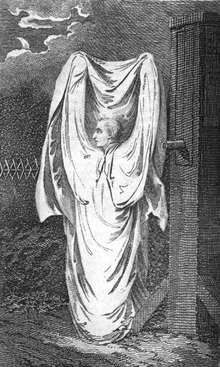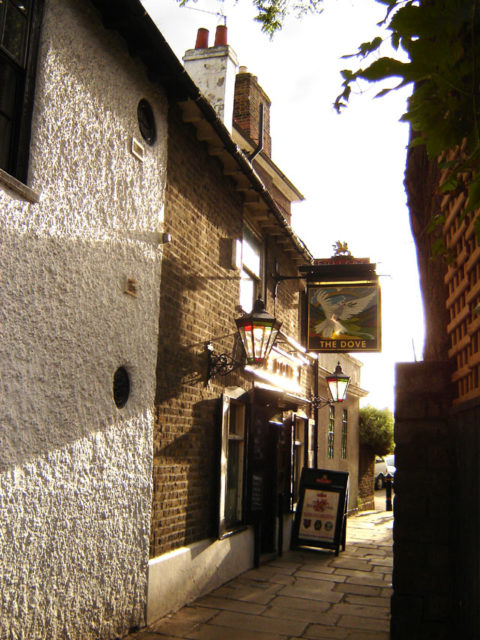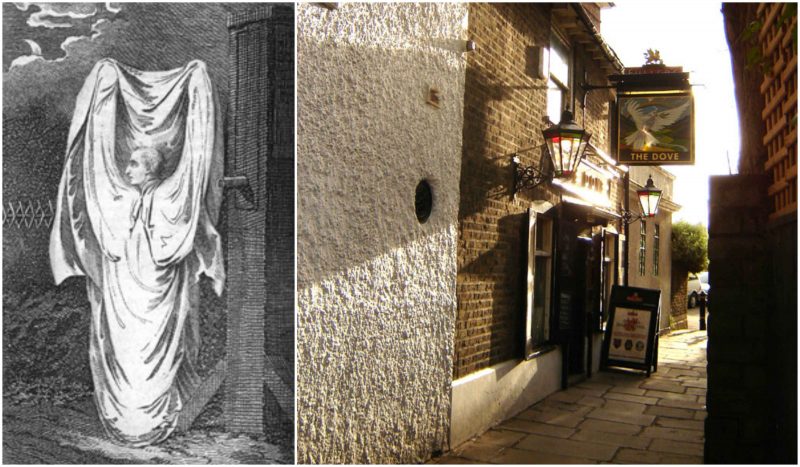Back in 1803, people living in the Hammersmith area of London started telling stories about a ghost wandering around the neighborhood, and it wasn’t a friendly one; people claimed that it was hostile, and some even complained that it attacked them.
There were two deaths which apparently caused by the ghost. First, an old lady, and then a pregnant woman. They both claimed that they’d seen the ghost, and when they passed away, people claimed that their deaths were a result of the shock and stress regarding their encounter with the phantom.

Among the many people who claimed that they had seen the ghost was a brewer’s servant, Thomas Groom. He apparently met it while walking in front of a churchyard. The ghost appeared from behind him and started choking him. He said that he saved himself by fighting the ghost off, “I gave a bit of a push out with my fist and felt something soft, like a great coat.”
Then, there was the story of William Girdler, a night-watchman who saw the ghost and chased it. While running away, the ghost threw off its shroud and managed to escape. The people of Hammersmith were living in constant fear of the ghost, and so organized armed patrols in the hopes of catching it.
Girdler was also one of the witnesses to the “murder of ghost” – though not necessarily The Ghost. On the evening of 3 January 1804, Girdler met a patrolling citizen on the street. That person was Francis Smith, and he was armed with a shotgun. Smith told Girdler that he was searching for the ghost, and the two agreed to meet each other later that evening to continue the hunt together.

At the same time, in the same neighborhood, a carpenter called Thomas Millwood was just leaving his parents’ house and heading home. He was wearing his white work clothes. Maybe too white for his own good on that night. He wore white linen trousers, a new, very white, waistcoat of flannel, and an apron, which he wore around him. He was even warned by a neighbor that his appearance in such white clothes resembled that of a ghost and could confuse people.
As soon as Millwood got onto the street, with his white clothes practically shining in the moonlight, he was very easily noticed by Smith. Smith clearly mistook Millwood for the ghost he had been looking for, and yelled, “Damn you; who are you and what are you? Damn you, I’ll shoot you.” after which Smith shot him in the lower left jaw and killed him. This is how the event played out according to Millwood’s sister, who was still near the door when Thomas left the house and was met by Officer Smith.
Francis Smith was tried for a willful murder, found guilty and sentenced to death, although his sentence was later commuted to one year’s labor. A central point of the case was whether or not Smith’s mistaken belief that Millwood was the ghost constituted a defense. The judge remarked that whether or not Millwood had been the ghost, Smith had still intended to kill a man who had made no threatening actions towards him, and that he had fired his gun with little warning.
This didn’t stop the specter of the case from hanging over the English legal system, and for almost 200 years the debate raged over whether an incidence of mistaken belief could be used as a legal defense. It wasn’t until 1984 in the case R v Williams that the matter was finally settled by the Court of Appeal.
As for the ghost? The massive publicity surrounding the case prompted the real culprit to come forward. John Graham, an elderly shoemaker, confessed to using a white sheet to pretend to be a ghost in order to scare his apprentice, who had in turn been scaring Graham’s children with ghost stories. There is no record of Graham ever being punished for his actions.
